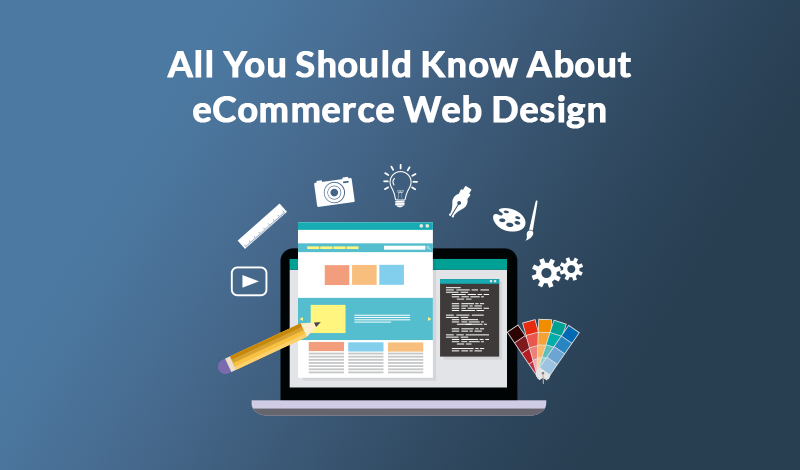Web design has always been an important part of success for websites of all kinds. But when it comes to eCommerce web design, there are some things you should know if you aren’t working with eCommerce website developers and planning to learn how to create a website from scratch. Here’s all you should know about eCommerce web design.
#1 Start with The Product Catalog

First, it’s worth discussing one of the key elements of your website: the product catalog. For eCommerce, this just might be the fundamental part of what makes your website work because the catalog is meant to list all your products or services and make it easy for potential customers to browse them. Here are the steps you should go through to create the best product catalog for your website:
- Make a list of all your products and/or services with all the necessary specifics. You probably already have an Excel document listing these, so you can use that. You will need the names of the products, their technical characteristics, prices, etc.
- Create a template for the different categories of your products. These template pages will be filled out and put on your website in the catalog to make the product listings consistent.
- Write sample product descriptions for the different categories of your products. You can then simply insert the necessary information into the samples to use on every product’s separate page.
- Prepare the necessary visuals to put on your product pages. These can be photographs, videos, and infographics. Later on, you can also add social proof or mentions to the separate product pages that get such exposure on other websites.
- Fill in the templates and upload all the product pages on your website once it is designed. Make any necessary adjustments and proofread everything you have wrote to eliminate typos or grammar mistakes.
#2 Adopt the Customer’s Mindset

Now, how exactly do you make your eCommerce web design work both for you and for your customers? The key here is to adopt the customer’s mindset and try to see the website through their eyes. This will help you enhance the UX or user experience which is essential for the success of your website. If your potential customers keep getting obstacles on their way while browsing your website, they might simply leave and never come back.
Such aspects as navigation and checkout are particularly important. Navigation will be discussed later, but what’s good to remember about checkout is that it shouldn’t be difficult to complete. Ensure that the process is secure and simplify the process as much as you can. In addition to that, think about your delivery and shipping policy page which will probably be visited often. Place links to it on different other relevant pages of your website.
#3 Focus on Branding

While designing your website, it is necessary to focus on branding as it will help you keep your website design unique while also keeping it uniform. Moreover, a proper focus on branding can help your eCommerce website appear more professional which can make your audience associate such characteristics as professionalism and authority with your brand.
As Ben Hudson from the writing service reviews site Best Writers Online says, “Branding is one of the best devices you can use to improve brand awareness and get more exposure. The best part is that you can use branding in different ways and especially on your website. Originality is hard to find these days, so if you manage to pull that off with your website design, your site visitors will definitely remember it.”
#4 Add Marketing Elements

Likewise, adding marketing elements into the design of your website can improve it too. Just like branding, marketing elements don’t have to be particularly obvious – on the contrary, they should be subtle. But this subtlety will help them do what they are meant to do: promote your products, encourage customer actions, increase conversions, and so on.
For example, placing the email subscription form in the footer or the header of your website will make it appear on all your pages reminding the site visitors that they can subscribe to your newsletter. Try to have at least a few calls to action on every page of your website because they will prompt users to act and will help you get more conversions.
#5 Think About Navigation

As mentioned earlier, navigation is one of the most important things for a good user experience. If your site visitors can’t find what they are looking for, they might get discouraged and eventually leave your website. Most of them won’t come back and give you a second chance, so it’s better to get them hooked on their first visit.
First, design your menu bar smartly. Second, make sure to categorize your products and add filtering options to the catalog. Third, if you have a blog on your website, add links to the articles you post directing readers to relevant pages on your website. Likewise, include relevant links on all your web pages.
#6 Incorporate Social Proof

As mentioned above, you can use social proof on your product pages once you start getting reviews from customers and mentions in different publications. However, you can also create a separate page with customer feedback and media mentions to showcase the best responses in one place.
As Camille Atkins from the paper writing service reviews site puts it, “Social proof can be extremely powerful when used correctly. If your customer isn’t sure whether they want to purchase a certain product from you, several positive reviews from past clients can help a lot in persuading them to make the purchase.”
#7 Use Psychological Techniques

Last but not least, psychological techniques can also be used in eCommerce web design to maximize the results from the separate elements you include on your website. Here are some things to consider:
- The fewer options the person has and the simpler the options are, the faster they can make a decision.
- When there are multiple similar objects present, the object that stands out will most likely be the one the person remembers.
- Items at the beginning of the list are better remembered than the items in the middle of the list just like items at the end of the list are better remembered than the items in the middle of the list.
- Memory and learning depend on both verbal and non-verbal information, so delivering information in dual bits (e.g. image and audio) is more effective than doing it in a singular way.
Final Thoughts
All in all, designing your eCommerce website properly is a must as it will greatly impact the performance of your digital marketing campaigns. Make sure to use the tips in this article to work on your own eCommerce web design.
Aaron Swain is a writing specialist who is currently working in the writing service reviews company Best Writers Online. He is passionate about marketing and SEO. He expands and improves his skills throughout the writing process to help and inspire people.





Leave a Reply